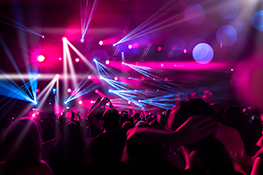Mood Lighting Techniques for Theatre Productions
Lighting is an essential element of any theatre production, playing a crucial role in setting the mood, enhancing the visual storytelling, and guiding the audience’s attention. Mood lighting, in particular, can transform a stage into a captivating and evocative environment, transporting the audience into the heart of the story. Here’s a comprehensive guide to mood lighting techniques, providing insights into their features, benefits, and usage tips:
Understanding Mood Lighting
Defining Mood Lighting
Mood lighting, also known as atmospheric lighting, refers to the use of light to create specific emotional responses and evoke a particular atmosphere within a theatrical performance. It goes beyond simply illuminating the stage; it involves manipulating light to highlight specific aspects of the scene, create depth and dimension, and evoke emotions in the audience.
Key Elements of Mood Lighting
Several key elements contribute to effective mood lighting in theatre:
- Color: Color plays a crucial role in setting the mood. Warm colors like reds and oranges evoke feelings of excitement and energy, while cool colors like blues and greens can create a sense of calm and serenity.
- Intensity: The intensity of light can significantly impact the mood. High intensity can create a sense of urgency and excitement, while low intensity can create a more intimate and mysterious atmosphere.
- Direction: The direction of light can affect the mood by emphasizing certain aspects of the scene or creating shadows that enhance the visual storytelling.
- Texture: Light can be used to create different textures and patterns, which can contribute to the overall mood. For example, a spotlight with a gobo can create a textured pattern on the stage, adding depth and intrigue.
Techniques for Creating Mood Lighting
1. Color Mixing
Using a combination of colored lights allows for a wide range of emotional expression. By mixing different colors, you can create a unique and nuanced atmosphere. For example, a blend of red and blue can create a dramatic and suspenseful mood, while a mixture of warm yellow and orange can evoke a feeling of warmth and nostalgia.
2. Shadows and Silhouettes
Shadows and silhouettes can add depth and drama to a scene, enhancing the visual storytelling. Using backlighting or side lighting can create dramatic shadows that emphasize the form and movement of actors, while silhouettes can create a sense of mystery and intrigue.
3. Focus and Spotlights
Spotlights can be used to highlight specific areas of the stage, drawing the audience’s attention to particular characters or objects. The intensity and size of the spotlight can be adjusted to create different levels of focus and emphasize the significance of the moment.
4. Diffusion and Soft Lighting
Diffused or soft lighting can create a sense of intimacy and warmth, making the scene feel more welcoming and inviting. Using diffusion filters or placing lights further away from the stage can soften the light, creating a more gentle and romantic atmosphere.
5. Lighting Changes and Transitions
Strategic lighting changes and transitions can highlight key moments in the story and create a sense of anticipation or tension. Slow fades, crossfades, and sudden changes in color or intensity can effectively convey the emotional arc of the scene.
Benefits of Effective Mood Lighting
1. Enhanced Storytelling
Mood lighting is a powerful tool for enhancing the visual storytelling of a production. By creating a specific atmosphere and highlighting key elements, it can effectively guide the audience’s emotions and understanding of the narrative.
2. Increased Audience Engagement
By evoking specific emotions and immersing the audience in the world of the play, mood lighting can significantly increase audience engagement and create a more memorable and impactful theatrical experience.
3. Amplified Character Development
Lighting can be used to emphasize character traits and motivations, highlighting their emotional state and actions. Using specific colors, intensity levels, and angles can effectively amplify the portrayal of each character, adding depth and complexity to their performance.
Tips for Effective Mood Lighting Design
1. Collaborate with the Director
Close communication with the director is crucial for developing a mood lighting design that aligns with the overall vision and artistic direction of the production.
2. Consider the Story and Setting
The story and setting of the play should inform the lighting design. Consider the time period, the location, and the mood that needs to be created to achieve the desired atmosphere.
3. Utilize a Variety of Lighting Techniques
Don’t rely on just one or two lighting techniques. Experiment with different colors, intensities, and angles to create a dynamic and engaging visual experience.
4. Pay Attention to Transitions
Smooth and strategic transitions between lighting cues are essential for maintaining the flow of the story and avoiding sudden shifts in mood that could disrupt the audience’s experience.
5. Conduct Lighting Rehearsals
Schedule dedicated lighting rehearsals to refine the lighting design and ensure that it effectively complements the actors’ movements and the overall stage picture.
Conclusion
Mood lighting is an essential aspect of theatre productions, enhancing the visual storytelling, engaging the audience, and adding depth and complexity to the overall performance. By carefully considering the key elements of mood lighting and utilizing various techniques, lighting designers can create a captivating and unforgettable experience for the audience.
Stagelights.in offers a wide range of stage lighting equipment and solutions to help you achieve your desired lighting effects. Our team of experts can provide guidance and support, ensuring that you have the right tools to create stunning and impactful mood lighting for your productions.
Contact Us
For inquiries and to learn more about our stage lighting solutions, please contact us:
- Phone: 1800 200 6000, +91 90150 60000
- Email: info@stagelights.in


 Auditorium Construction Services
Auditorium Construction Services 